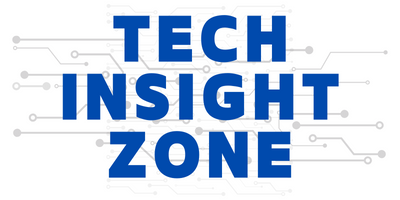Adobe has unveiled a new weapon: an AI Assistant for its popular Acrobat Reader software. It is a new generative AI tool currently in beta that can analyze and summarize PDFs, answer questions about their content, and even generate formatted excerpts for emails, presentations, and reports.
This beta feature, currently available in English, promises to revolutionize the way users interact with PDFs, raising the question: is it truly a game changer, or simply clever marketing?
Let’s delve into the details and explore its potential impact.
Unveiling the Power of AI in Document Management
(Video- Adobe)
The AI Assistant acts as a multi-faceted virtual assistant within your PDF, we all know it. But this time it’s going beyond simply answering questions. Here are some of what it can do:
a. Contextual Search:
Ask it open-ended questions related to the document’s content, and it will scour the text, providing focused answers with linked sources for enhanced credibility.
Imagine needing to understand the financial implications of a specific clause in a complex contract. You can ask the AI Assistant, receive a concise explanation, and instantly jump to the relevant section of the document for further context.
b. Advanced Summarization:
Generate summaries that go beyond bullet points. The AI Assistant can extract key themes, arguments, and data points, structuring them into a coherent and easy-to-digest format.
This is invaluable for busy professionals who need to grasp the essence of lengthy reports or contracts quickly. Think summarizing a 50-page research paper in minutes, allowing you to focus on actionable insights and move on with your tasks.
c. Content Creation at Your Fingertips:
Perhaps the most game-changing aspect is the AI Assistant’s ability to assist with content creation. Based on the document’s insights, it can draft emails, presentations, meeting notes, and even research summaries. Imagine automatically generating a clear and concise meeting agenda based on a complex technical report, saving you the time and effort of manual note-taking and summarization.
While the AI Assistant’s capabilities are impressive, several factors cloud its immediate impact:
Beyond Functionality: Accessibility, Cost and Limitations
a. Who can access the AI Assistant beta?
- Acrobat Standard and Pro customers: Individual and Teams subscribers, as well as Acrobat Pro trial users, can access AI Assistant beta on both the desktop and web versions of Acrobat.
- Acrobat Reader users: Access through the Reader desktop app is coming soon, but isn’t available yet.
- Acrobat enterprise customers: Contact your sales representative for access to a private beta with features tailored to your specific needs.
b. Is AI Assistant beta free?
- During the beta period: Yes, all eligible users can access the full range of AI Assistant features at no additional cost.
- After beta: When AI Assistant becomes generally available (GA), it will require a new add-on subscription plan for both Acrobat and Reader users.
c. What are the limitations of AI Assistant beta?
- File size and page count: The feature currently only works with PDFs under 25MB and with less than 120 pages.
- File permissions: PDFs with password protection, “do not copy” permissions, or other restrictions that prevent processing are not supported.
- Scanned PDFs: Only text-based PDFs are supported, not scanned documents.
- Language: Currently, AI Assistant only works with English language PDFs.
So, what’s next?
Looking ahead, the AI Assistant’s potential is undeniable:
a. Streamlined Workflows:
Imagine legal professionals quickly analyzing contracts, researchers effortlessly summarizing findings, and business teams generating impactful presentations based on complex reports – all with the help of AI.
b. Democratization of Information:
By simplifying document comprehension and content creation, the AI Assistant can empower individuals with less technical expertise to engage with complex information, potentially bridging the knowledge gap.
c. A Collaborative Future:
As AI technology matures, imagine the AI Assistant evolving into a true collaborator, suggesting alternative perspectives, identifying potential biases, and prompting critical thinking alongside its core functionalities.
However, it’s crucial to remember that AI is a tool, not a replacement for human judgment. Users must be discerning of the information generated, fact-check conclusions, and maintain control over the content creation process.
Ultimately, the impact of the AI Assistant hinges on its user adoption, responsible development, and ethical implementation.
If embraced thoughtfully and with due diligence, it has the potential to transform the way we interact with information, making knowledge more accessible and empowering individuals to achieve more.
Whether it’s a true friend or foe in the document management space remains to be seen, but one thing is certain: the future promises to be increasingly intelligent, and Adobe’s AI Assistant is at the forefront of this exciting evolution.
Furthermore, in a digital landscape driven by AI innovations, Adobe’s introduction of an AI assistant for Acrobat Reader marks a significant stride in enhancing user productivity. This development mirrors the ongoing trend seen with Boximator, TikTok’s latest contender in the AI video editing realm.
Both advancements underscore the growing integration of artificial intelligence across diverse platforms, promising users streamlined experiences and heightened efficiency. Explore how these technological marvels are reshaping digital workflows and empowering users in our interconnected world.




